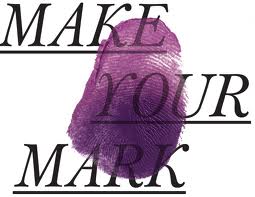 Dani Robbins is the Founder & Principal Strategist at Non Profit Evolution located in Columbus, Ohio. I’ve invited my good friend and fellow non-profit consultant to the first Wednesday of each month about board development related topics. Dani also recently co-authored a book titled “Innovative Leadership Workbook for Nonprofit Executives” that you can find on Amazon.com.
Dani Robbins is the Founder & Principal Strategist at Non Profit Evolution located in Columbus, Ohio. I’ve invited my good friend and fellow non-profit consultant to the first Wednesday of each month about board development related topics. Dani also recently co-authored a book titled “Innovative Leadership Workbook for Nonprofit Executives” that you can find on Amazon.com.
The book Governance as Leadership, by Richard P. Chait, William P. Ryan and Barbara E. Taylor, and the modes of governance contained within, changed the way I look at Board service and the capacity of Boards to move the needle of change in their communities.
Several recent blog posts have been dedicated to discussing how to move governing Boards from focusing primarily on the fiduciary mode toward becoming more strategic and generative. High functioning Boards manage in all three modes depending on the circumstances and the needs of the organizations, yet fiduciary is and must continue to be the foundation of Board governance.
As a quick reminder, those modes are as follows:
- Fiduciary – the board is faithful to its mission, accountable for performance, and compliant with relevant laws and regulations. It exercises its legal responsibilities of oversight and stewardship.
- Strategic – the board is responsible for strategic thinking and sets the organization’s priorities and course, and deploys resources accordingly.
- Generative – the board’s work entails efforts to make sense of circumstances, to discover patterns and discern problems, and to make meaning of what’s happening.
Boards are made up of appointed community leaders who are collectively responsible for governing an organization. That includes:
- Setting the Mission, Vision and Strategic Plan;
- Hiring, Supporting and Evaluating the Executive Director;
- Acting as the Fiduciary Responsible Agent,
- Setting Policy and
- Raising Money
Most of how that happens is at Board and committee meetings, which is really the point of today’s blog.
 The minimum requirements to become a functioning governing Board operating in the fiduciary mode is this:
The minimum requirements to become a functioning governing Board operating in the fiduciary mode is this:
You must have a quorum at all Board meetings. The organization’s Code of Regulations (also called by-laws) will dictate the number of Board members required to be in the room to have a quorum; it is usually half or half plus one. When you do not have a quorum the Board will not legally be able to take action, which in addition to stymieing the organization’s capacity to function, will also be noted in your audit, and in turn will quickly become a concern for your funders.
Minutes must be taken at each meeting of the Board of Directors and approved at the following meeting. Those minutes should include who was in attendance (distinguish between Board and staff please), the approval of the prior meting minutes and the financial statements as well as any and all votes, including the complete motion that was made and by whom, who seconded and if it was a unanimous vote. Minutes should also include the name of any Board members who voted no as well as anyone who abstained. Only Board members can make motions. Staff can make recommendations but in most cases cannot vote.
Financial statements, including a profit and loss, variance against the budget and a balance statement must be presented, explained and voted upon at each meeting. The Treasurer, when presenting the financials, should review anything that is higher or lower than expected, and explain anything that is not immediately obvious. Board members should ask questions until they understand and are willing to have their name listed as voting yes in favor of accepting the financial statements as presented.
 Committee decisions should be presented by the Chair of the Committee (not by staff, other than occasionally by request of the Chair) and anything that requires a vote should be motioned by that Chair. As listed in a prior post the following need votes:
Committee decisions should be presented by the Chair of the Committee (not by staff, other than occasionally by request of the Chair) and anything that requires a vote should be motioned by that Chair. As listed in a prior post the following need votes:
- Any Policy – crisis communication and management, personnel, etc.
- Past board meeting minutes;
- Financial reports;
- Agency Annual Budgets;
- Plans – strategic, board development and/or resource development;
- Changes to the strategic direction of the organization;
- The hiring of an Executive Director;
- Audits;
- Campaigns;
- Opening, closing or changing the signatures on bank accounts;
- Changes to the mission or vision; and
- Board Members and Officers being added, or renewed.
Board meetings should also include a report from the Executive Director (also called CEO). Any recommendations that are made must be motioned by a board member and should then follow the voting path outlined above.
Board Chair’s often make reports as well, yet do not make motions or vote themselves unless there is a tie to break.
The meeting ends with any old or new business.
There are myriad ways to move a Board from a strictly fiduciary Board toward a high functioning Board, but none can happen before a Board masters their fiduciary responsibility. Fiduciary responsibility is the price of admission to Board leadership, but it can’t end there. Strategic and generative leadership is what engages Board members and moves the needle for change in our communities. Isn’t that why we serve?
What’s been your experience? As always, I welcome your insight and experience.



 Welcome to O.D. Fridays at DonorDreams blog. Every Friday for the foreseeable future we will be looking more closely at a recent post from John Greco’s blog called “
Welcome to O.D. Fridays at DonorDreams blog. Every Friday for the foreseeable future we will be looking more closely at a recent post from John Greco’s blog called “ In that five-minute period of time as I paced the back of the banquet hall, there was a moment where I stopped listening and worrying about LaShaunda and I focused on what was happening in the room:
In that five-minute period of time as I paced the back of the banquet hall, there was a moment where I stopped listening and worrying about LaShaunda and I focused on what was happening in the room: For the last few weeks, I’ve found myself in a number of non-profit boardrooms talking to board volunteers about a variety of difficult subjects. These difficult conversations covered the following areas uncomfortable areas: staff reduction, re-organization, service reduction, radical revenue enhancement, board transformation, and so on. In each instance, it felt like a “soul-searching” discussion . . . very big and very weighty. I found myself wishing for a magic pill that I could dispense that would make their path forward a little less difficult.
For the last few weeks, I’ve found myself in a number of non-profit boardrooms talking to board volunteers about a variety of difficult subjects. These difficult conversations covered the following areas uncomfortable areas: staff reduction, re-organization, service reduction, radical revenue enhancement, board transformation, and so on. In each instance, it felt like a “soul-searching” discussion . . . very big and very weighty. I found myself wishing for a magic pill that I could dispense that would make their path forward a little less difficult. So, one organizations might find some comfort in their shared values of:
So, one organizations might find some comfort in their shared values of:














